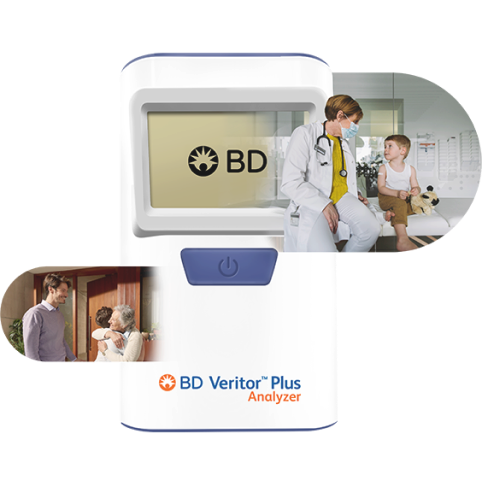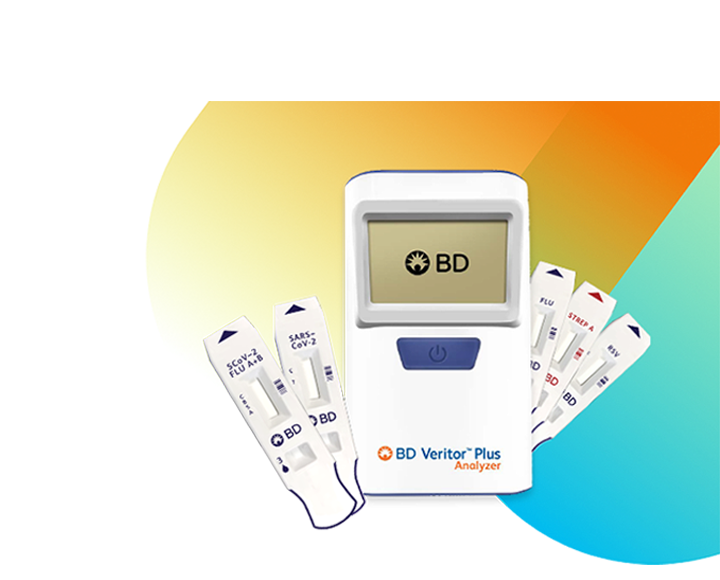Our Available Assays
Once you have bought the BD Veritor™ Plus Analyzer, you can then order various compatible assays to deliver reliable respiratory infection testing.
The BD Veritor™ Plus System
The BD Veritor™ Plus Analyzer provides reliable results in a timely manner, allowing you to quickly diagnose and treat your patients using an easy-to-read, portable device. Once you have bought the device, you can choose from a range of assays for a menu of respiratory tract infections.
Designed With You in Mind
The BD Veritor™ Plus System provides diagnostic testing where and when your patients need it, offering reliable, rapid results for a variety of respiratory tract infections.

Contact a Sales Representative to get your organization’s
diagnostic testing program started today
Adapt Without Compromise
Highly efficient
Reliable results are important to help you confidently create treatment plans that fit your patients’ needs.
Quick results with just one sample
May reduce the potential for manual workflow errors by streamlining sample processing.
Relatively inexpensive
Because it can perform multiple tests, even in the same visit, the BD Veritor™ Plus Analyzer is cost-efficient.
Workplace compatible
The analyzer is small enough to be portable, so you can test where your patients are—and it provides workflow options for multitasking and efficiency.
How It Works
The BD Veritor™ Plus System provides an easy sample-collection process that can be incorporated across a variety of clinical settings.
BD Veritor™ Plus System Support & Training
See how BD supports you with tools, education, and training—enabling a streamlined point-of-care experience for those you serve, and confidence in your results.
Buying Options
Order the BD Veritor™ Plus Analyzer and system accessories. Browse our CPT codes for various rapid antigen assays, including Flu and COVID-19.
RSV=respiratory syncytial virus; SARS-CoV-2=severe acute respiratory syndrome coronavirus 2.
*In the USA, the BD Veritor™ System for Rapid Detection of SARS-CoV-2 & Flu A+B has not been FDA cleared or approved but has been authorized by the FDA under an Emergency Use Authorization for use by authorized laboratories; use by laboratories certified under the CLIA, 42 U.S.C. §263a, that meet requirements to perform moderate, high, or waived complexity tests. The product is authorized for use at the Point of Care (POC), i.e., in patient care settings operating under a CLIA Certificate of Waiver, Certificate of Compliance, or Certificate of Accreditation.
This product has been authorized only for the detection of proteins from SARS-CoV-2, influenza A and influenza B, not for any other viruses or pathogens; and, in the USA, the emergency use of this product is only authorized for the duration of the declaration that circumstances exist justifying the authorization of emergency use of in vitro diagnostics for detection and/or diagnosis of COVID 19 under Section 564(b)(1) of the Federal Food, Drug and Cosmetic Act, 21 U.S.C. §360bbb-3(b)(1), unless the declaration is terminated or authorization is revoked sooner.


bd.com